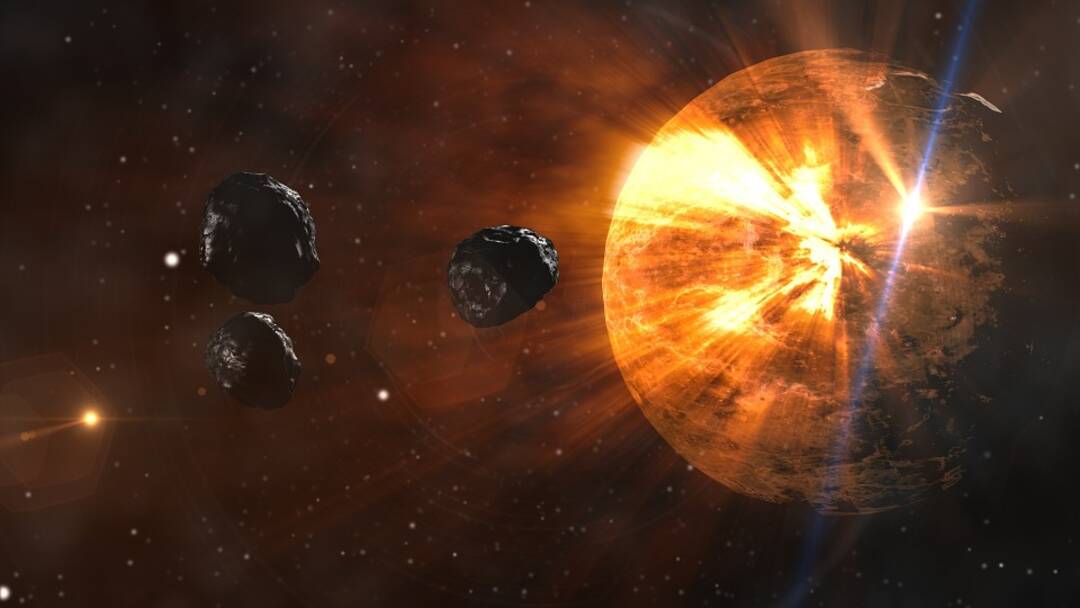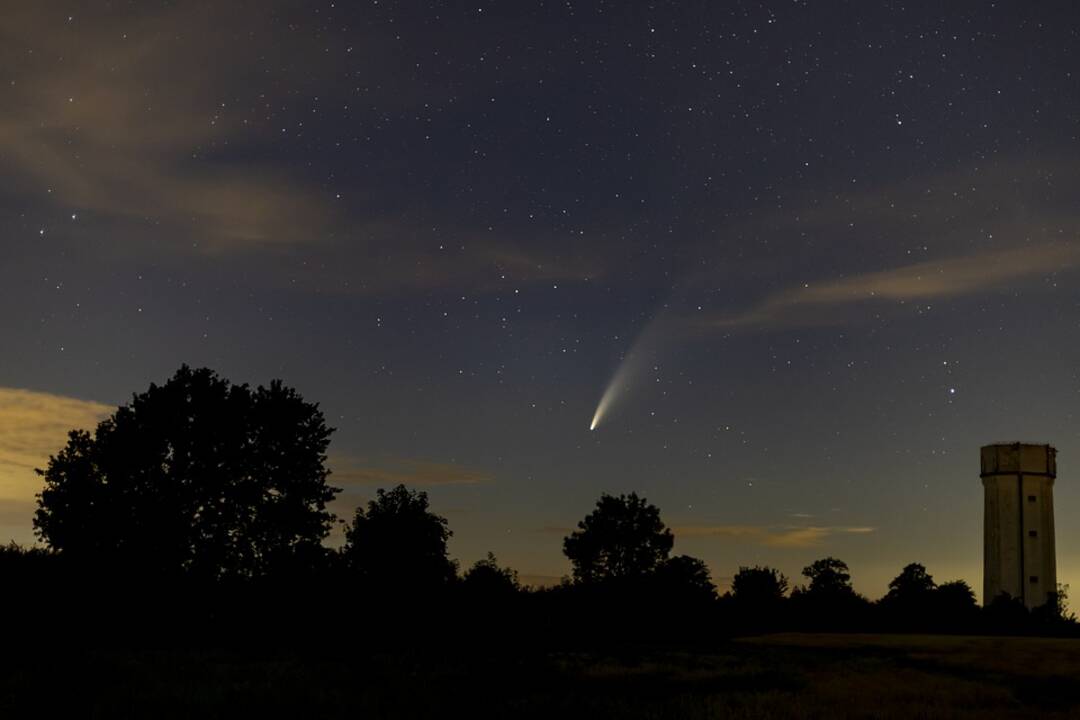-
Australian astronomers uncover long-held colourful theory about comets

The Xinhua reporetd that astronomers from the University of New South Wales (UNSW) Sydney have proven a long-held colourful theory about comets.
It said that the findings, published on Tuesday in the Proceedings of the National Academy of Sciences journal, confirmed the theory that the green light emitted by comets is the result of an unstable element, dicarbon, reacting to light as they travel closer to the sun.
While the theory first arose in the 1930s, due to the unstable nature of dicarbon, scientists were unable to run tests until now.
Timothy Schmidt, a chemistry professor at UNSW and senior author of the study, said they were able to run the tests using "a vacuum chamber, a lot of lasers, and one powerful cosmic reaction."

"First we had to make this molecule which is too reactive to store in a bottle," Schmidt said. "It's not something we could buy from the shops."
"We did this by taking a larger molecule, known as perchloroethylene or C2Cl4, and blasting off its chlorine atoms (Cl) with a high-powered UV laser."
The experiment took nine months to fully set up, but the team was eventually able to simulate the breakdown of dicarbon in a lab, proving that it was responsible for a comet's green glow.
Schmidt said: "It's extremely satisfying to have solved a conundrum."
US denounces Russia for ‘dangerous and irresponsible’ space missile test
UAE, Egypt announce cooperation to advance rapidly-growing space sector
Russian director, actress plan to shoot first feature film in outer space
TheXinhua mentioned that the experiment also showed that the process of dicarbon being broken down by UV rays from the sun, also known as photodissociation, happens so rapidly the light never makes it to the comet's tail -- which often appears as a white mist.
Schmidt said being able to study dicarbon here on Earth was likely to open up new avenues of discovery.
He said: "By understanding its lifetime and destruction, we can better understand how much organic material is evaporating off comets," adding that "Discoveries like these might one day help us solve other space mysteries."
Commenting on the study, UNSW astrobiologist and geologist Professor Martin van Kranendonk said that it could also lead to new knowledge about how earth formed and eventually provided the conditions for life.
Van Kranendonk said: "Early Earth would have experienced a jumble of different carbon-bearing molecules being delivered to its surface, allowing for even more complex reactions to occur in the leadup to life."
Source: xinhua
You May Also Like
Popular Posts
Caricature
BENEFIT Sponsors BuildHer...
- April 23, 2025
BENEFIT, the Kingdom’s innovator and leading company in Fintech and electronic financial transactions service, has sponsored the BuildHer CityHack 2025 Hackathon, a two-day event spearheaded by the College of Engineering and Technology at the Royal University for Women (RUW).
Aimed at secondary school students, the event brought together a distinguished group of academic professionals and technology experts to mentor and inspire young participants.
More than 100 high school students from across the Kingdom of Bahrain took part in the hackathon, which featured an intensive programme of training workshops and hands-on sessions. These activities were tailored to enhance participants’ critical thinking, collaborative problem-solving, and team-building capabilities, while also encouraging the development of practical and sustainable solutions to contemporary challenges using modern technological tools.
BENEFIT’s Chief Executive Mr. Abdulwahed AlJanahi, commented: “Our support for this educational hackathon reflects our long-term strategic vision to nurture the talents of emerging national youth and empower the next generation of accomplished female leaders in technology. By fostering creativity and innovation, we aim to contribute meaningfully to Bahrain’s comprehensive development goals and align with the aspirations outlined in the Kingdom’s Vision 2030—an ambition in which BENEFIT plays a central role.”
Professor Riyadh Yousif Hamzah, President of the Royal University for Women, commented: “This initiative reflects our commitment to advancing women in STEM fields. We're cultivating a generation of creative, solution-driven female leaders who will drive national development. Our partnership with BENEFIT exemplifies the powerful synergy between academia and private sector in supporting educational innovation.”
Hanan Abdulla Hasan, Senior Manager, PR & Communication at BENEFIT, said: “We are honoured to collaborate with RUW in supporting this remarkable technology-focused event. It highlights our commitment to social responsibility, and our ongoing efforts to enhance the digital and innovation capabilities of young Bahraini women and foster their ability to harness technological tools in the service of a smarter, more sustainable future.”
For his part, Dr. Humam ElAgha, Acting Dean of the College of Engineering and Technology at the University, said: “BuildHer CityHack 2025 embodies our hands-on approach to education. By tackling real-world problems through creative thinking and sustainable solutions, we're preparing women to thrive in the knowledge economy – a cornerstone of the University's vision.”
opinion
Report
ads
Newsletter
Subscribe to our mailing list to get the new updates!






















